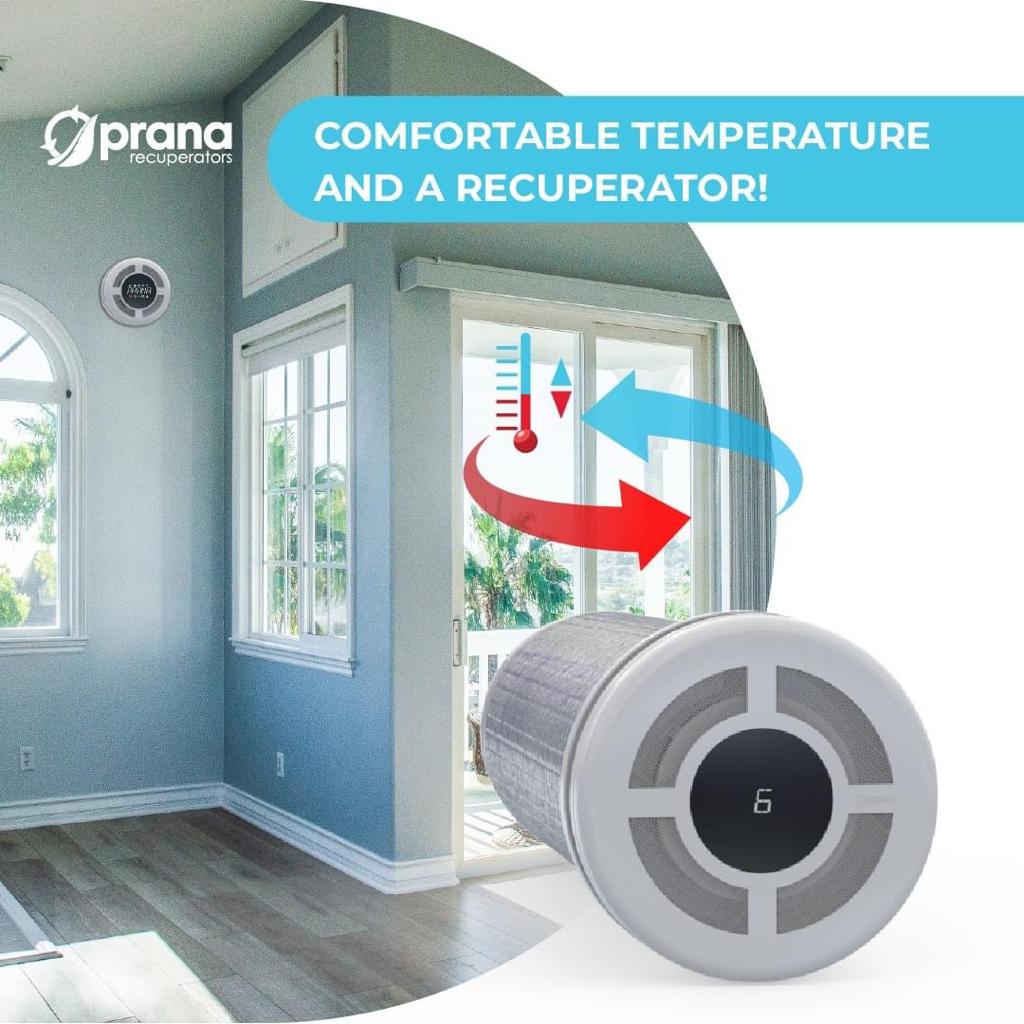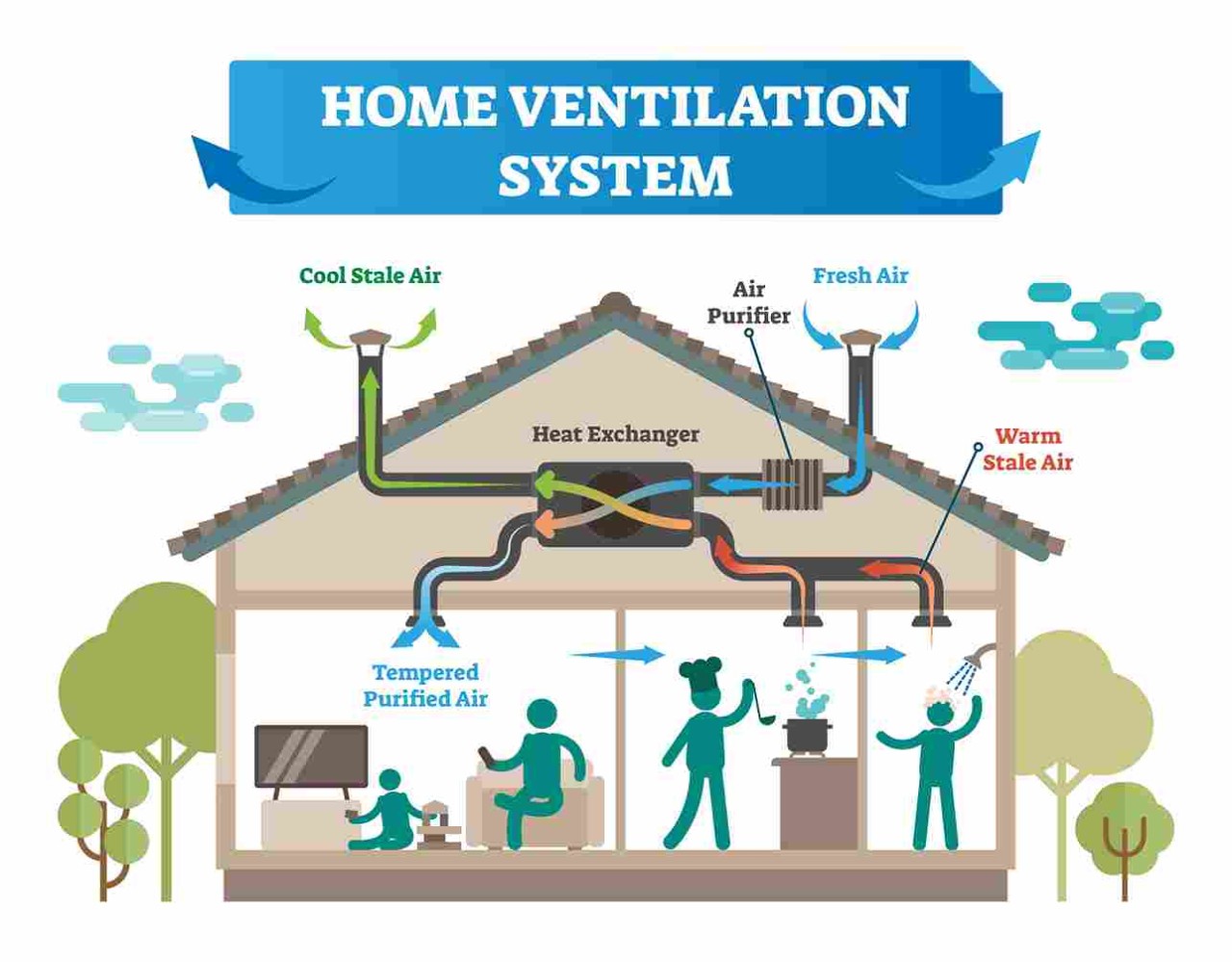Understanding the Relevance of Home Ventilation for a Healthier Living Environment
Home air flow plays a necessary duty in maintaining a healthy living setting. It assists in the exchange of interior and exterior air, which is very important for enhancing air top quality. Without correct ventilation, homes can become breeding premises for toxins and allergens. The effects of insufficient air blood circulation can be considerable. This raises the inquiry of how homeowners can efficiently implement ventilation techniques to protect their health and wellness. Comprehending these approaches is important.

The Essentials of Home Ventilation
Home air flow functions as an essential component of interior air quality and comfort. It includes the process of trading stale interior air with fresh outside air, therefore minimizing moisture and managing temperature. Proper air flow systems can consist of all-natural approaches, such as open windows and vents, as well as mechanical systems, such as exhaust followers and air exchangers. Effective home air flow aids avoid issues like indoor mold and mildew development and the build-up of dangerous fragments. It additionally boosts overall energy performance, as well-ventilated spaces can maintain comfortable temperature levels with less dependence on home heating and cooling systems. Understanding the essentials of home ventilation is important for house owners looking for to produce a healthier living environment for themselves and their families.

Typical Sources of Indoor Air Air Pollution

Although several might not recognize it, indoor air contamination can stem from different sources within a home. Usual contributors include volatile natural compounds (VOCs) given off from paints, solvents, and cleansing items. Family devices, such as gas stoves and fire places, can release damaging gases like carbon monoxide and nitrogen dioxide. In addition, mold and mildew thrive in wet areas, launching spores that affect air high quality. Animal dander, dirt mites, and pollen can build up inside, more worsening pollution levels. Smoking inside creates toxic chemicals that linger airborne. Finally, developing materials, including asbestos and formaldehyde, can off-gas unsafe materials. Acknowledging these resources is essential for preserving a healthier interior setting and promoting reliable air flow techniques.
Wellness Impacts of Poor Ventilation
Indoor air pollution can have significant health and wellness implications, especially when ventilation is inadequate. Poor air flow can result in the build-up of hazardous contaminants, such as unpredictable organic compounds, mold and mildew, and particle issue. This build-up may result in breathing problems, including asthma, allergies, and persistent obstructive lung condition. Individuals may experience symptoms like headaches, tiredness, and irritation of the eyes, nose, and throat. Vulnerable populaces, such as youngsters and the senior, go to greater threat for serious wellness impacts. Long-term exposure to improperly ventilated atmospheres can likewise add to much more major problems, consisting of cardio illness. Making certain appropriate ventilation is important for keeping a healthy living atmosphere and minimizing the risk of health complications linked with indoor air pollution.
Efficient Air Flow Methods for Your Home
Appropriate ventilation is vital for maintaining a healthy and balanced interior environment, and applying effective techniques can considerably improve air top quality. Homeowners can begin by making certain that exhaust followers are mounted in shower rooms and cooking areas to get rid of excess moisture and odors. Opening home windows frequently allows fresh air to circulate, particularly during light weather condition. Additionally, using air purifiers with HEPA filters can help record airborne toxins. For homes with heating and cooling down systems, preserving HVAC systems and changing filters frequently is essential for peak performance. Incorporating all-natural air flow techniques, such as cross-ventilation, can additionally boost air movement. Ultimately, securing any kind of leaks in doors and windows protects against unwanted drafts, which can disrupt controlled air flow, ultimately causing boosted indoor air high quality and convenience.
Preserving Optimal Air Quality Year-Round
To keep excellent air high quality year-round, house owners should adopt a positive approach to handling their indoor setting. Consistently keeping track of interior air quality is critical; this consists of monitoring for contaminants such as dirt, mold and mildew, and volatile natural substances (VOCs) Applying reliable ventilation systems, such as exhaust fans and air purifiers, can significantly lower airborne find pollutants. Additionally, routine upkeep of HVAC systems guarantees peak efficiency and air blood circulation. Homeowners ought to likewise consider humidity levels, as extreme moisture can lead to mold growth. Seasonal modifications might demand changes in ventilation approaches to accommodate differing outside air top quality. By focusing on these techniques, homeowners can create a much healthier home, advertising general health for all occupants throughout the year.
Regularly Asked Concerns
Just How Can I Inform if My Home Demands Better Ventilation?
To figure out if a home needs better air flow, one should observe indications such as persistent humidity, mold and mildew growth, musty odors, condensation on home windows, or increased allergy symptoms, indicating poor air flow and possibly bad interior air high quality.
What Are the Signs of Poor Indoor Air Top Quality?

Can Houseplants Improve Indoor Air Quality Efficiently?
The performance of houseplants in boosting interior air quality is questioned. While some studies suggest they can absorb contaminants and produce oxygen, their general effect may be marginal contrasted to appropriate air flow and air purification systems.
Exactly how Frequently Should I Adjustment My Air Filters?
The regularity of air filter changes typically relies on usage and filter type. Typically, it is suggested to replace filters every 3 months, though households with see here now allergic reactions or family pets might require even more constant adjustments for suitable performance.
Exist Any Type Of Specific Ventilation Solutions for Allergic Reaction Sufferers?
Several ventilation systems, such as HEPA-filtered systems, efficiently reduce irritants airborne. Home Ventilation Melbourne. These systems trap pollen, dust, and family pet dander, supplying allergic reaction sufferers with a cleaner, healthier interior next atmosphere while handling air high quality successfully
It promotes the exchange of indoor and outside air, which is crucial for boosting air high quality. Home ventilation serves as an important element of interior air quality and comfort. It involves the process of trading stagnant interior air with fresh exterior air, consequently decreasing humidity and managing temperature level. Indoor air contamination can have considerable health implications, specifically when air flow is inadequate. Correct air flow is crucial for preserving a healthy indoor environment, and applying efficient techniques can significantly boost air quality.